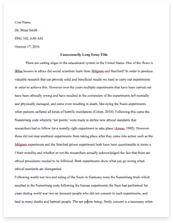“Homeland” by Anna Maria Dell’oso

A limited time offer! Get a custom sample essay written according to your requirements urgent 3h delivery guaranteed
Order NowIn the article “Homeland” by Anna Maria Dell’oso, the issue of identity; in particular, cultural identity, is thoroughly explored by the composer. It is mainly about how identity is passed on from generation to generation, changes over time and is influenced by a person’s surroundings. The composer conveys this through her use of symbolism and sharp and often humourous contrast. It is about her search to find her Italian identity, while at the same time her mother loses some of her Italian identity because of changes influenced by time and surroundings.
The composer shows that cultural identity is passed on from one generation to another and that it may change or be lost due to a person’s surroundings, by the intertwining structure of this article. She reminisces about her childhood, while at the same time telling how her mother’s perception of Italy is not living up to expectations; she searches for her identity, while her mother loses some of hers.
The composer’s use of emotive language evokes a sense of nostalgia in responders; “My father’s dream was to sit in the sun with the old men…lighting candles in a wind-swept church…sit in the sun of sepia photographs”. Then, the truth is slowly revealed, often through the form of letter excerpts from her mother; “She didn’t recognise her sisters…winded by the force of time. Finally, there is the final sharp contrasting image; “It was all McDonalds’ and pigeon shit”. This continues on throughout the text, each time emotions and nostalgia is induced by the composer and each time, it is shattered by the startling contrast of reality. Through this contrast, the composer is gradually finding her sense of identity, while her mother realises that her Italian identity has changed over time, finally coming to terms with it in the final letter excerpt; “All is lost here, the country has changed…young people no longer want to work and the doctors are fools”. Although there is some exaggeration and humour, a feeling desolation is conveyed fast pace of the sentences.
Throughout the article, the composer uses an image of a key as an extended metaphor symbolising the bond between mother and daughter and it assists her in her search for her identity. The key is first introduced in the literal sense, as her parents’ house keys. The keys open up her thoughts and memories as she begins her search for identity. The next mention of the key is when the composer remembers back to her first house key and how she was being called names: “Little Wog Riding Hood”, because she was Italian. The key here symbolises her Italian heritage. The extended metaphor of the key is used to show the composer’s lack of identity as it is symbolic of a bond between mother and daughter, a bond that she lacked. She was almost envious of her daughter when her mother gave her daughter a necklace; “The key I wanted, that secret thing that is unlocked from mother to daughter, was never given to me…hidden within the apple of time from which my children bite out their nourishment.” The composer so desperately seeks the ‘key’, the connection from mother to daughter, her connection to her cultural heritage and identity.
The key is once again mentioned in the last paragraph of the article, when the composer “double locks the front door” of her parents’ home. The locking up of the door shows an ending and finality to her search, she then proceeds to say “In my hand was a golden key”; this is especially symbolic of the fact that now her mother’s perception of Italian identity has changed and is closer to her own perception, thus bringing together mother and daughter.
The article shows that as a mother loses some of her cultural identity, her daughter seems to gain that identity, almost as if it is not really lost, but merely passed on from mother to daughter. This reflects the fact that identity changes over time and is influenced by many factors. The composer successfully illustrates this through the sharp contrasts used throughout the article and the symbolic key.










